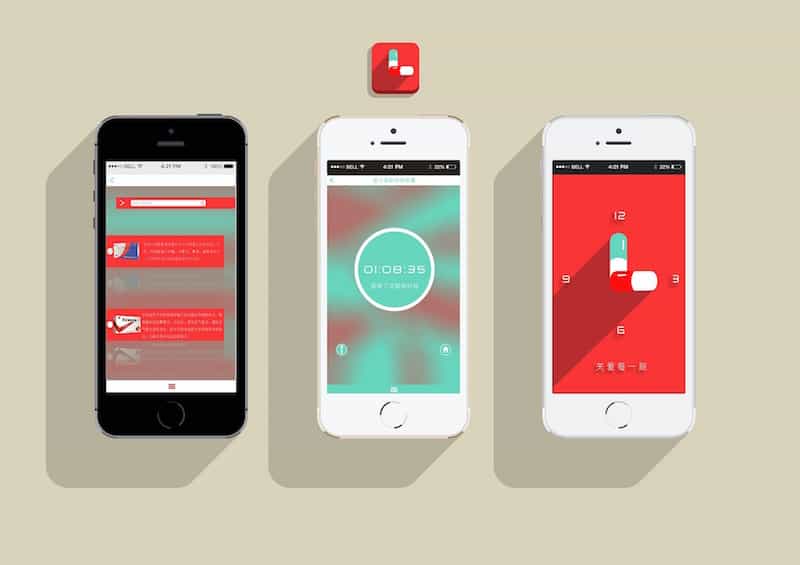Are you trying to build mobile apps for the first time or are you someone who has already developed a few mobile apps?
In either case, you will agree that your motive is the same: to achieve tremendous success with your mobile app!
But, the question is, what are the parameters for the success of a mobile app?
If you believe that a higher number of downloads of your mobile app is the only metric to gauge success, then you probably need to reconsider the metrics!

Have you considered the possibility that your app is unsuccessful, if your app is downloaded by 1,000 users on the day of its launch and only five of those users continue using the app after that day?
Even though you may feel your app has made a successful start, the fact is that it is not a great situation to be in! Such figures reveal that your app was only found interesting by 0.5% of its users.
So, it is vital for you to identify the key performance indicators (KPIs) or metrics against which you will track the success of your app.
This needs to be done when you start to build the app and only then will you be able to include all the required features in your app that could help turn it into a successful one!
In this article, we look at the top 10 critical metrics to measure the success of your mobile app.
You should note that the key metrics to be used also depends on the domain or industry sector of the business for which your mobile app is being developed.
For example, a gaming app may use slightly different metrics to measure its success compared to a healthcare app.
Key Metrics to Determine the Success of Your Mobile App
A higher number of downloads helps you get listed among the top ranking apps available on the different app marketplaces or stores, such as Google Play and iTunes Connect.
Apart from measuring just the number of app downloads, you also need to track the demography of your app downloads. This means that you need to use attribution tools to learn where the majority of your app downloads have come from.
You also need to understand the time at which your apps are being downloaded, the sources from which your users are landing on the app download page and so on.
This information will help you prepare better marketing campaigns to promote your mobile app to the right set of audience and improve your reach.
You need to track the number of times your mobile app is opened by the users on a regular basis. It is one thing to download the app and quite another to like it and use it frequently because of better engagement.
To understand whether your app is being liked by the users, you need to track the parameters, such as Monthly Active Users (MAU) and Daily Active Users (DAU).

In order to improve your mobile app that you have already developed, you need to learn what is being liked by your app users and what problems they facing.
For this reason, you should keep an eye on the user reviews and ratings given by the users of your app in the various stores as well as on certain popular technology blogs.
A great tool for in-app support and feedback about bugs and app crashes is Helpshift. You can use it to update your app frequently and deliver a better experience to your app users.

You need to measure the amount of time spent inside the app by your app users. So, you need to know when they open the app and when they close it.
For an online store app, you will prefer your users have shorter sessions, indicating a smooth process of selecting the products to checkout.
Yet, for a successful game app, you would want your users to have longer sessions, indicating that they enjoy playing the different levels of your game.
It is common to relate success directly to the revenue that your mobile app business is able to generate.
However, a true analysis will help you understand that your success is significant if the average revenue generated per user (ARPU) is high.
In this way, you can focus on having quality users of your app, rather than just aiming to increase the user count which may not always increase the revenue generated.
It is likely that you would want to earn some revenue through strategic ad placement inside your free apps.
To assist you in understanding the key areas where ads can be placed, you need to have an understanding about where your app users often go from the home screen of your app.
You need to track the flow of the screens and get an idea about which screens they spend more time on.
The lifetime value (LTV) is a probable measurement of the value that any user will bring during the entire lifetime of usage of your app.
You can use it to identify whether the revenue from your app was generated through ad impressions or clicks, in-app purchases, referrals or something else.
In this way, you can target your customers better and improve the revenue generation options.
You need to keep a look at the performance of your app while it is being used by different users.
Additionally, you need to measure the loading time of your app every time a user tries to open it. This is important to retain your users as no user will come back to your app if it performs poorly or takes a lot of time to load.
It is vital to retain your users and a retention rate calculation helps you determine how many users installed your app and still continue to use it even today.
Similarly, you also need to understand the churn rate, which refers to the number of users who stopped using your app after initially downloading it.
Those mentioned above are just a few of the many performance metrics or indicators that you can use to keep track of and measure the success of your mobile app. These may vary slightly based on the domain of your app, your target audience, your revenue generation method and your business goals.
In my opinion the most important metrics are:
Thanks to these, you can answer yourself to below questions:
Their dashboard has intuitive layout which helps with finding desired information fast.